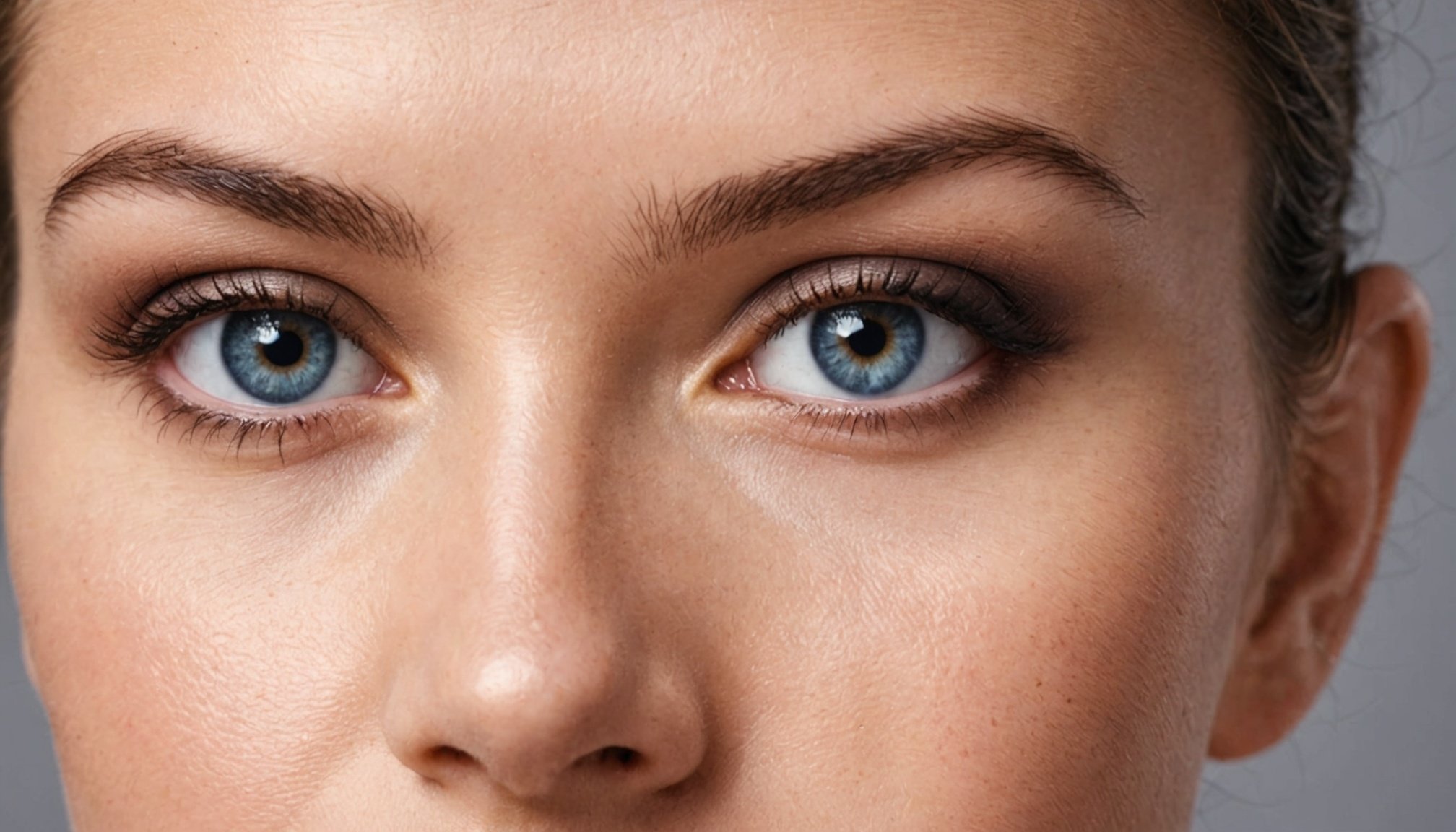Dark circles under the eyes stem from factors like aging, genetics, and lifestyle, affecting appearance more than health. Understanding their causes helps target the right treatments—ranging from simple home remedies to advanced medical options—to restore a fresher, more youthful look effectively and safely.
Causes and Risk Factors of Dark Circles under the Eyes
Dark circles are a common concern, with multiple factors contributing to their appearance. Understanding these causes can help determine appropriate treatments and preventive measures.
In the same genre : How Can Advanced Ceramics Improve Heat Resistance in UK Manufactured Engines?
Aging-Related Changes
As skin ages, it gradually becomes thinner and loses volume, particularly under the eyes. This natural aging process results in decreased collagen production, making blood vessels more visible through the delicate skin. Loss of fat pad support in the tear trough area can create shadowy hollows, intensifying the dark appearance. These age-related changes are primary causes of dark circles and are often accompanied by increased puffiness and skin laxity.
Genetic Predisposition and Family History
Genetics play a significant role in the development of dark circles. Individuals with a family history of this condition are more prone to experiencing it themselves. Hereditary factors influence skin pigmentation, thickness, and blood vessel prominence. For some, dark circles may be evident from a young age and tend to persist over time, regardless of lifestyle modifications.
Additional reading : Find the perfect plus size mother of the bride outfits today
Lifestyle Factors and Environmental Influences
Certain habits and environmental exposures can exacerbate dark circles:
-
Lack of Sleep: Insufficient rest leads to blood vessel dilation and fluid retention, making dark circles more prominent.
-
Stress and Dehydration: Both can weaken skin integrity, accentuating under-eye darkness.
-
Smoking: Toxins impair blood circulation and degrade collagen, causing skin deterioration and darker under-eye areas.
-
Sun Exposure: Ultraviolet rays stimulate melanin overproduction, resulting in hyperpigmentation.
-
Diet and Allergies: Excess salt can cause fluid retention, while allergies may trigger rubbing and inflammation, worsening dark pools under the eyes.
Associated Medical Conditions
In some cases, persistent dark circles may indicate underlying health issues, such as iron deficiency anemia or nasal congestion. Allergic reactions can increase blood vessel visibility due to inflammation and rubbing.
Prevention and Management
A combination of lifestyle adjustments and targeted treatments can effectively address causes of dark circles. Consistent use of sunscreen, adequate hydration, a balanced diet rich in antioxidants, and proper sleep habits are fundamental. Medical interventions include topical creams, laser treatments, and fillers for more persistent cases, but a healthcare provider’s guidance is essential for safe and effective solutions.
For more details on Treatments for Dark Circle, including advanced procedures like laser therapy, visit the treatments page for comprehensive options.
Medical and Cosmetic Treatment Options for Dark Circles
Non-Invasive and Topical Treatments
Non-invasive under eye dark circle remedies remain the preferred first step for many individuals due to their accessibility and minimal downtime. Vitamin C serums for brightening and retinol creams for dark under eyes are clinically recognized for their ability to lighten pigmentation and stimulate collagen. Both target melanin overproduction, a leading cause of dark circles. Layering hyaluronic acid for eye rejuvenation underneath gentle antioxidants supports hydration and reduces fine lines that accentuate under eye shadows. Eye masks and patches, especially those with peptides and caffeine, can provide temporary relief by decreasing swelling and making the skin look more refreshed.
Professional treatments, including chemical peels for under eye skin and micro-needling for skin regeneration, further assist those dealing with persistent skin discoloration. These procedures refine surface texture and help penetrate active ingredients more deeply, improving both color and firmness under the eyes. Using a cold compress benefits for eyes by constricting blood vessels, which can minimize the bluish tint from visible veins, is a common home remedy.
Invasive and Medical Procedures
For more substantial results, invasive options address structural and pronounced dark circles. Cosmetic fillers for undereye circles, typically hyaluronic acid-based, restore under eye volume lost from aging or hereditary causes. By filling hollow areas, they reduce the shadow effect causing darkness. Laser treatment for eye circles, including pulsed dye or diode lasers, targets pigmentation and tightens lax skin—making it well-suited for cases where excess melanin or thin skin is evident. More intensive interventions, like surgical blepharoplasty, remove redundant skin and underlying fat pads, tackling significant puffiness and sagging contributing to under eye dark circle remedies.
Consulting with dermatologists helps tailor these approaches based on individual risk factors, such as melanin overproduction causes or blood vessel visibility under eyes. Each treatment plan may blend several techniques for optimal results, ensuring safety and suitability.
Professional and Lifestyle Strategies
Lifestyle changes often serve as essential support for any medical approach. Sleep and under eye appearance are tightly linked: establishing regular sleep routines and managing sleep position can materially reduce eye puffiness. Hydration and skin health, bolstered through a diet rich in antioxidants, assist in easing visible discoloration while supporting skin repair. Applying sun protection and eye area products, such as broad-spectrum sunscreen and UV-blocking sunglasses, prevents further pigmentation.
Smoking, alcohol, and unmanaged stress are proven culprits for worsening under eye darkness and should be addressed as part of lifestyle changes to minimize dark circles. Seeking guidance from skincare specialists and dermatologists not only aids in choosing the best creams for under eye darkness but also provides a strategy for how to remove dark circles under eyes permanently and maintain healthy under eyes. Long-term improvement aligns closely with commitment to these professional and lifestyle practices.
Causes of Dark Circles: In-Depth Insights
Melanin overproduction is a primary reason for under-eye discoloration, especially in individuals with darker skin tones. When melanin overproduction occurs, it leads to hyperpigmentation, manifesting as brown or blackish circles beneath the eyes. This tendency often runs in families and is more pronounced in those with racial pigmentation nuances, highlighting how genetics and skin type directly influence the appearance of dark circles.
Blood vessel visibility under eyes plays a noticeable part. The skin surrounding the eyes is thin and delicate, making the underlying network of blood vessels more prominent. As a result, blue or purple hues can become visible, intensifying the perception of fatigue or poor health. Factors such as dehydration or insufficient sleep can further expand blood vessels, compounding the darkness. For many, the combination of melanin overproduction and blood vessel visibility under eyes leads to persistent and stubborn circles.
The impact of aging brings additional texture changes to the under-eye region. Over time, the natural collagen in the skin diminishes, and the tissue loses elasticity. This change causes the skin to thin even further, making both pigment and blood vessels more apparent. Additionally, aging results in the gradual deepening of the tear trough—a groove running from the inner eye toward the cheek—which increases shadowing. This anatomical development enhances the contrast between the under-eye area and surrounding skin, resulting in a more defined appearance of circles.
Lifestyle factors intersect with these biological mechanisms. Poor hydration, excessive sun exposure, and habits like smoking accelerate skin aging, reduce collagen, and intensify melanin overproduction. Inadequate sleep enhances blood vessel visibility under eyes and disrupts normal healing and cell turnover. Consistently following a hydration and skin health regimen, getting adequate rest, and using proper sun protection are supportive measures that mitigate these underlying processes.
Understanding how melanin overproduction causes, increased blood vessel visibility under eyes, and aging effects on under-eye skin come together helps in developing a tailored approach to both prevention and treatment. These insights highlight the interconnectedness of anatomy, genetics, environment, and lifestyle in shaping the visible traits of dark circles.
Home Remedies and Lifestyle Adjustments for Dark Circles
Natural and DIY Treatments
Applying cold compresses is a simple yet effective way to reduce under eye dark circle remedies. The low temperature constricts blood vessels, resulting in visibly less swelling and a brighter under-eye area. Placing cucumber slices or cooled herbal tea bags over closed eyes can provide soothing relief, reduce puffiness, and refresh skin that shows signs of fatigue. As part of home remedies for dark circles, facial massage techniques encourage lymphatic drainage and enhance blood circulation, helping to minimize blood vessel visibility under eyes.
Adequate hydration and skin health go hand in hand. Drinking enough water each day supports plump, resilient skin and lessens the prominence of dark circles. Prioritizing sleep and under eye appearance is also critical—aiming for consistent, complete rest helps the body repair itself, while a balanced diet rich in antioxidants, such as berries and leafy greens, aids in reducing pigmentation and supporting natural treatments for eye discoloration.
Preventative Measures
Consistent sun protection and eye area care can prevent new dark circles from forming. Apply sunscreen daily and wear sunglasses to shield the delicate under-eye skin from UV rays, limiting melanin overproduction causes. Making positive lifestyle changes to minimize dark circles involves managing stress, reducing alcohol intake, and quitting smoking. These adjustments help slow skin aging and maintain an even skin tone.
Proper sleep positioning, such as elevating the head slightly, limits fluid retention overnight, which can otherwise contribute to eye puffiness and discoloration. Developing an eye care routine—using gentle cleansers and avoiding eye irritation—helps protect sensitive under-eye skin.
Complementary Supportive Practices
Effective methods for concealing under eye darkness techniques include using colour-correcting concealers and blending carefully with your skin tone—this instantly brightens the area and boosts confidence. Performing regular facial exercises for eye area strength helps maintain skin elasticity and supports natural collagen stimulants.
An antioxidant-rich diet plays a strong role in skin lightening and protection. Vitamins C and K, as well as healthy fats, nourish thin under eye skin and reduce inflammation naturally. Combining these supportive practices with evidence-based dark circle treatments maximizes results, ensuring you maintain healthy under eyes.
Frequently Asked Questions about Dark Circles
When to Seek Medical Advice for Persistent Dark Circles
For those struggling with under eye dark circle remedies, it’s important to know when medical attention is needed. Most under eye darkness results from genetics, fatigue, or lifestyle—but if you notice rapid changes, darkness under just one eye, or associated swelling, seek a dermatologist. Persistent or worsening symptoms may signal underlying issues beyond common causes of dark circles. Effective treatment plans for hereditary dark circles often require specialist consultation, particularly when common home remedies for dark circles or best creams for under eye darkness show limited improvement.
Effectiveness and Safety of Over-the-Counter Products
Many people turn to evidence-based dark circle treatments such as vitamin c serums for brightening, retinol creams for dark under eyes, and specialized under eye serums after seeing mixed results with natural treatments for eye discoloration. Safety of over the counter treatments usually depends on sensitive formulations designed for the delicate under eye area; always patch-test to avoid irritation. Products with antioxidants, hyaluronic acid for eye rejuvenation, and peptides can deliver visible improvement with consistent use and correct application.
Timeframes to Expect Visible Improvements
Patience is vital in treatment plans for hereditary dark circles. While some under eye dark circle remedies, like cold compress benefits for eyes, may yield temporary quick fixes, lasting changes from home remedies for dark circles or best creams for under eye darkness require several weeks. Most individuals see initial brightness within 4-8 weeks with regular use of dermatologist recommended therapies. For more significant transformation, especially in cases of melanin overproduction causes or aging effects on under eye skin, non-invasive eye treatments such as laser treatment for eye circles or chemical peels for under eye skin, performed under professional care, can take several sessions over months.
In summary, consulting skincare specialists helps tailor treatment plans for hereditary dark circles, selecting the safest and most effective approach from the wide range of under eye dark circle remedies available.
Summary of Causes and Treatment Effectiveness
Evaluating Home Remedies vs Medical Procedures
The causes of dark circles under the eyes are typically a combination of genetics, lifestyle habits, and physiological changes such as aging, pigmentation, and thin skin. Home remedies for dark circles appeal to those seeking quick relief without medical intervention. Simple measures like a cold compress can reduce swelling, while elevating the head during sleep may minimize fluid retention. Eye massage for improved circulation and using cucumber slices or tea bags can also offer temporary under eye dark circle remedies.
However, the effectiveness of home remedies for dark circles generally aligns with managing milder cases where sleep deprivation or dehydration is the culprit. These options are cost-effective and low-risk but rarely provide long-term improvement for pigmentation, structural changes, or significant volume loss. For individuals curious about how to remove dark circles at home naturally, techniques such as lifestyle changes to minimize dark circles, anti-inflammatory treatments for under eyes, and dietary adjustments targeting skin health can be considered. Still, expectations must remain realistic, as natural treatments for eye discoloration often produce modest enhancements.
When the underlying cause is persistent, such as melanin overproduction or visible blood vessels from thin under eye skin, professional procedures usually yield better results. Options like laser treatment for eye circles target pigmentation and blood vessels; chemical peels for under eye skin renew the surface, and hyaluronic acid for eye rejuvenation corrects hollowness. Fillers and vitamin C serums for brightening contribute to improved outcomes. Dermatologist recommended therapies and evidence-based dark circle treatments typically offer more pronounced and longer-lasting effects, albeit at a higher cost compared to home remedies.
Cost considerations should balance the need for ongoing maintenance with home remedies and the higher upfront investment required for professional therapies. Professional treatment costs reflect the advanced technology and expertise required for methods such as non-invasive eye treatments, micro-needling for skin regeneration, and cosmetic fillers for undereye circles. While over-the-counter eye creams and serums are widely available, selecting the best creams for under eye darkness depends on ingredients like retinol, vitamin K, and antioxidants, and their suitability to your skin type.
Importance of Personalized Treatment Strategies
Effectively managing dark circles hinges on understanding individual factors—whether it is pigment-based, the result of lifestyle choices, genetic predisposition, or age-related changes. Customized treatment plans for hereditary dark circles and medical causes of under eye darkness begin with assessing if the concern is due to volume loss, visible blood vessels, or excess pigmentation. Consultation with a specialist or dermatologist remains the best approach for how to remove dark circles under eyes permanently, especially when home remedies have failed.
Combining treatments for optimal outcomes is frequently recommended—integrating hydration and skin health routines, topical agents, and professional procedures tailored to the underlying causes of dark circles. This combination therapy approach maximizes effectiveness and addresses multiple risk factors for under eye darkness simultaneously. For persistent discoloration, monitoring and long-term maintenance become essential, as recurring pigmentation changes or volume shifts may need ongoing correction.
Prevention strategies such as consistent use of sunscreen and sunglasses, getting adequate and restful sleep, practicing lifestyle habits for healthy eyes, and minimizing exposure to irritants support the longevity of results from any treatment. Long-term, a layered approach—using both at-home and professional solutions—delivers the greatest chance for sustained improvements and helps maintain healthy under eyes.
Regular reviews with a skincare professional will help adapt your plan as factors like aging, seasonal effects on skin darkening, or lifestyle adjustments arise. Addressing each contributing element thoughtfully is key to achieving the best possible results and restoring a refreshed appearance.











